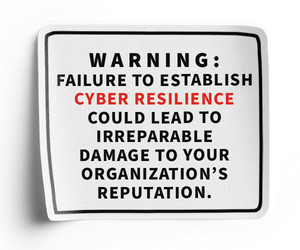Ultimately, this manifests as minimal disruption to operations during cyber incidents, quick recovery times and the ability to adapt to new threats, Plaggemier says.
The development of an incident response playbook is a critical element of effective cyber resilience, McIntyre explains. That playbook should outline “the step-by-step actions that must be taken following a cyber incident, ensuring that every cog in the organizational machinery understands its role and responsibilities during a crisis,” he writes.
Can a Cyber Resilience Review Help?
These playbooks can “enable rapid response to cyber incidents by providing clear guidance on containing a detected threat, mitigating its impact and initiating cyber recovery processes,” McIntyre adds. “The swifter the response, the easier recovery will generally be.”
Key metrics of effective cyber resilience include mean time to detect and mean time to respond to incidents, Plaggemier notes, as well as recovery time objectives, the number of incidents over time, and the success rate of incident response and recovery efforts.
READ MORE: Dig into the latest cybersecurity research.
France says that organizations also should conduct tabletop exercises to run through various cyberattack scenarios and determine how to respond.
Similarly, as the Cybersecurity and Infrastructure Security Agency notes, a thorough cyber resilience review can help an organization “develop an understanding of its ability to manage cyber risk during normal operations and times of operational stress and crisis.”
Such reviews can help “identify vulnerabilities, assess the effectiveness of current strategies and determine areas for improvement,” Plaggemier says. “This review process ensures that policies, procedures and technologies are aligned with the organization’s resilience objectives.”
What Solutions Help with Cyber Resilience?
There are many technology solutions and services that organizations can turn to for cyber resilience, experts say.
These include automated incident response systems, advanced threat detection tools, data backup and recovery solutions, and network segmentation technologies, Plaggemier says.
Additionally, she notes, cloud services and Disaster Recovery as a Service “can provide robust and flexible options for maintaining operational continuity during and after cyber incidents.”
Other cyber resilience capabilities that organizations can work with trusted third parties to deploy include infrastructure analysis, red and purple team exercises, incident response planning and testing, and cyber recovery plan automation and management.
“Cybersecurity resilience is a business concern,” France says, meaning that IT leaders must talk to business leaders and find out what is critical for the organization. “It’s never done in isolation. Cybersecurity is not a treatment to the business; it is an inherent part of the business.”













